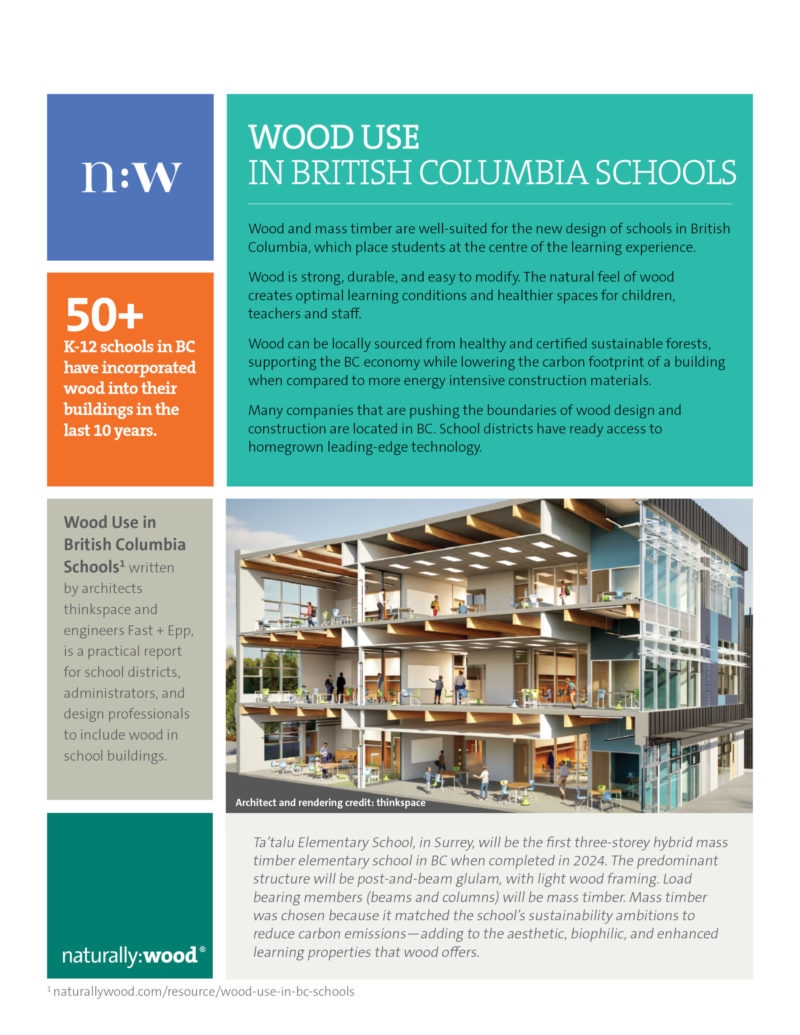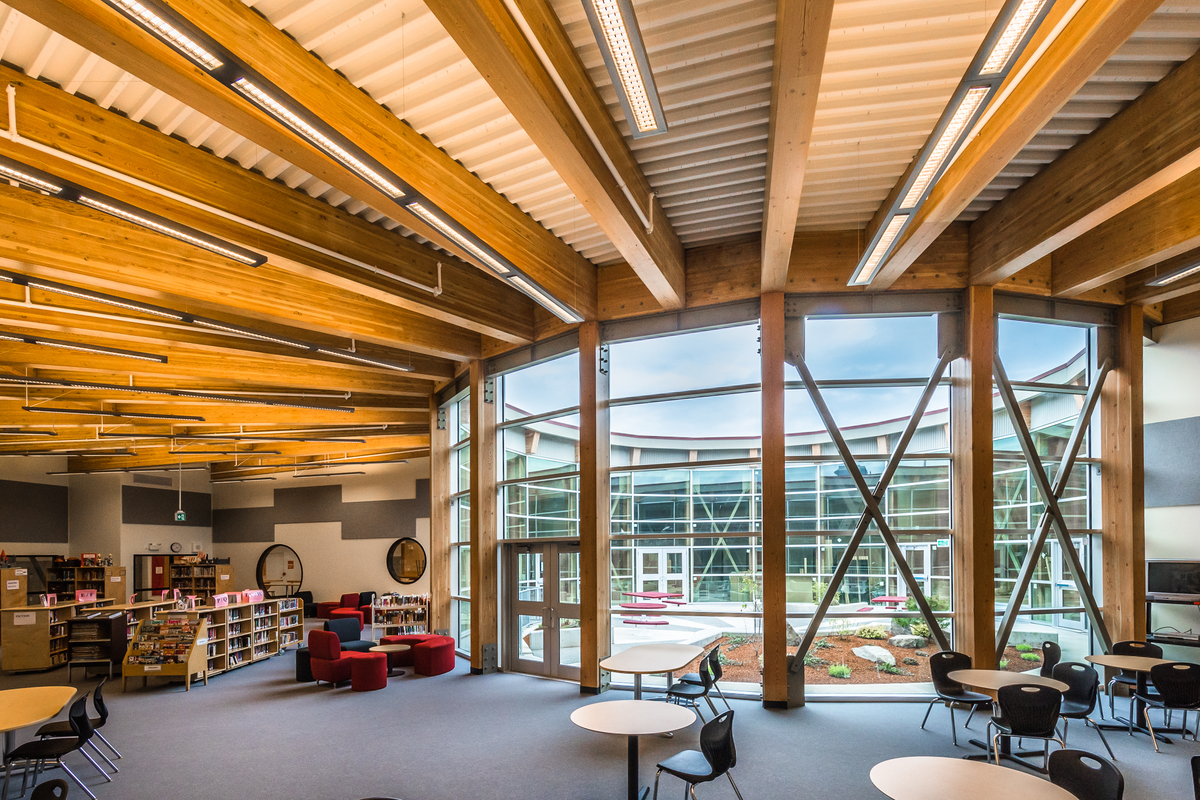Opportunities for wood in B.C. schools
There are many reasons to use wood in schools. It can be locally sourced from sustainable, renewable, and certified forests, while also supporting the provincial economy and communities across British Columbia (B.C.). Wood creates optimal living and working environments for building occupants, while still meeting code and building requirements for safety and performance. There are also significant sustainability benefits to using wood for construction (a lower carbon footprint when compared to concrete), as well as an ability to store (sequester) carbon in the building once it is complete and keep it out of the atmosphere.
Wood Use in British Columbia Schools, by Thinkspace Architecture Planning Interior Design Ltd.and Fast + Epp is intended as a useful guide for individuals or organizations curious about the use of wood in schools in British Columbia. It is intended for experts and novices alike who are part of the community that builds, maintains, and works in schools.
This report is predicated on one authored by Stantec and Fast + Epp in 2018. Some of the themes and concepts in the 2018 report have influenced this report, but the overwhelming majority of the work in this document is original content.
Topics include
- Types of wood construction in schools.
- Utilizing wood in school construction.
- Advances in wood use technology including mass timber.
- Building codes that affect the use of schools.
- A series of case studies on the various types of wood construction used in schools.




